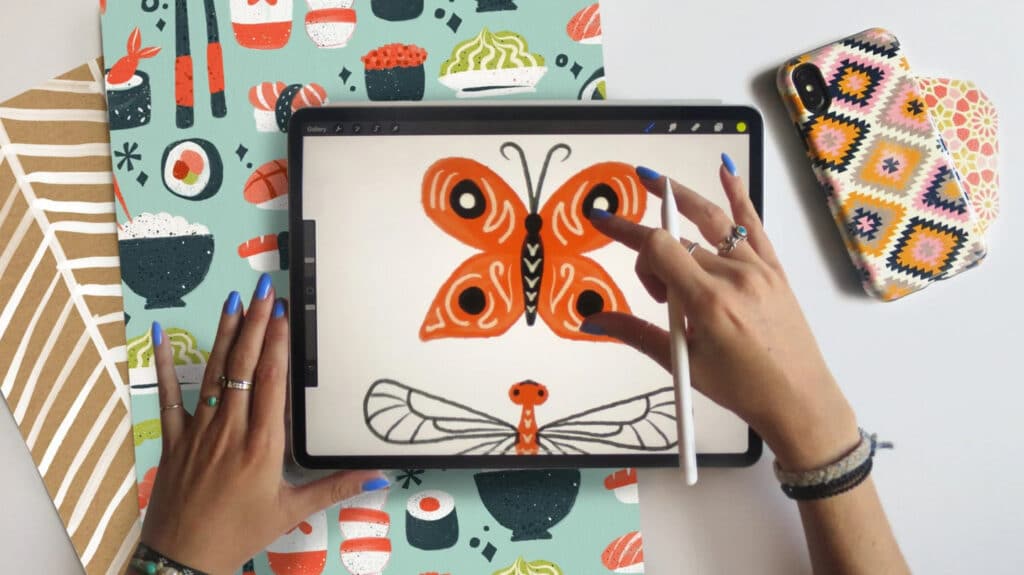Step-by-Step Guide: How to Prepare Your Artwork for Digitizing
Digitizing artwork for embroidery is an art and a science. Whether you’re a designer, a business owner, or someone looking to create custom embroidered products, understanding how to prepare your artwork properly is crucial. At NKEMB, we’ve seen countless designs come through our doors in various formats and conditions. The difference between a smooth digitizing process and a frustrating one often boils down to how well the artwork was prepared beforehand.
In this blog, we’ll walk you through the essential steps to prepare your artwork for digitizing, ensuring your embroidery looks sharp, professional, and exactly as you envisioned.
1. Use High-Resolution Images
The foundation of good digitizing starts with high-quality artwork. The resolution of your image plays a vital role in how clearly the digitizer can interpret the design. Ideally, your artwork should be at least 300 DPI (dots per inch). This resolution ensures that the lines and edges are crisp and well-defined.
Avoid blurry, pixelated, or low-resolution images because they make it difficult to distinguish fine details, shapes, and outlines. This often results in a less precise embroidery design, which can look messy or unclear once stitched.
If possible, provide vector files such as .AI (Adobe Illustrator), .EPS, or .SVG. Vector graphics are resolution-independent, meaning they can be scaled to any size without losing quality. This makes them the best choice for digitizing embroidery designs.
If you only have raster images like .JPG or .PNG, make sure they are clean, high-resolution, and not overly compressed. Compression artifacts can distort colors and edges, complicating the digitizing process.
2. Simplify Your Design
Embroidery is not the same as digital printing or screen printing. It has physical limitations because stitches have thickness and texture. Complex designs with too many tiny details, thin lines, or small text often don’t translate well into thread.
Before sending your artwork for digitizing, simplify your design by removing unnecessary details that won’t show up clearly in embroidery. For example:
- Avoid very thin lines or intricate patterns that may get lost.
- Remove or enlarge small text that might become unreadable.
- Limit the number of colors to make the embroidery process more efficient and affordable.
Simplifying your design helps maintain clarity and ensures that the final embroidered product looks clean and professional.
3. Choose and Specify Colors Carefully
Color selection is another critical step in preparing artwork for embroidery. The digitizer will map your design’s colors to the closest thread colors available. However, thread colors are not always an exact match to digital colors on screen.
To avoid surprises, be clear about the colors you want. If you have specific shades in mind, label Pantone colors or provide a color reference chart. This helps the digitizer select the correct thread colors and maintain consistency across your embroidery projects.
Keep in mind that embroidery thread colors can appear slightly different depending on fabric type and lighting, so it’s a good idea to request thread samples or proofs if color accuracy is essential.
4. Provide Context: Fabric and Usage Information
Where and how your design will be used affects how it should be digitized. Different fabrics and product types require different embroidery techniques to achieve the best results.
For example:
- Embroidery on caps requires tighter stitch density and specific underlay techniques to prevent puckering.
- Towels need looser stitches to maintain softness and absorbency.
- Jackets and thicker fabrics may require more robust stitching and different thread types.
When submitting your artwork, inform the digitizer about the intended fabric and product type. This allows them to adjust stitch direction, density, underlay, and other settings to suit the material, ensuring durability and visual appeal.
5. Use the Right File Format
The file format you provide can influence the digitizing process. As mentioned earlier, vector files like .AI, .EPS, or .SVG are preferred because they allow easy scaling and clear outlines.
If you don’t have vector files, high-resolution .PNG or .JPG files are acceptable, but they should be as clean and clear as possible.
Avoid sending low-quality PDFs, screenshots, or images with watermarks or backgrounds that interfere with the design.
6. Communicate Clearly with Your Digitizer
Good communication is key to a successful embroidery project. Alongside your artwork, provide any specific instructions or preferences you have for the final embroidery, such as:
- Desired size of the design.
- Placement on the garment or product.
- Any elements that need special attention or emphasis.
Clear communication helps the digitizer understand your vision and reduces the need for multiple revisions.
7. Review and Approve Digitized Samples
Once your artwork is digitized, ask for a sample or proof before full production. This allows you to check how the design translates into stitches and make any necessary tweaks.
A well-prepared artwork file often means fewer revisions and faster turnaround times, saving you time and money.
Final Thoughts
Preparing your artwork correctly before digitizing is essential for achieving beautiful, sharp, and professional embroidery. By starting with high-resolution or vector files, simplifying your design, choosing colors carefully, providing fabric context, and communicating clearly, you set your project up for success.
At NKEMB, we’re passionate about helping you bring your embroidery ideas to life. Proper artwork preparation not only saves time but also ensures your final product exceeds expectations. Follow these steps, and you’ll be well on your way to stunning embroidered designs!


Leave a Reply